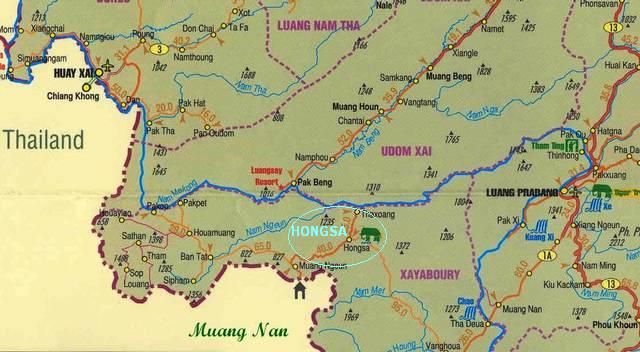|
|
|
Help Elephants Foundation, Laos |
|||||||
|
|
|
|
Our Location |
||
|
|
Visiting us |

|
|
Until the border to Thailand's Nan Province opens for foreigners some time in 2005, potentially re-directing the flow of of visitors to Laos' North, most tourists will continue to come down the Mekhong River instead. From Huay Xai, across from Chiang Rai Province, the slow boat takes two days to the star attraction of Luang Prabang. For Hongsa you would stop off at Tha Sueng (Thaxoang on our map), a tiny, scenic river port one hour downriver from Pak Beng. From there it s one hour's drive over beautiful jungled hills to our Hidden Valley of Hongsa.".... So now to the often-asked question of tourists after a few days in Laos: "Is there anything else to see or do??" The reply is "Sure, go and see the Elephants in their habitat..." Please contact us for travel arrangements.
On the Founder. Oliver Bandmann was born and grew up in Bangkok, spending his professional life in the Teakwood trade, a family business, that put him in almost daily contact with working elephants, especially in Burma. Growing up in the old Thailand, he absorbed elephant-lore from his earliest memories and a taste for the simple but exquisite life-style of the Old Orient. Retiring to neighbouring Laos 8 years ago , his native Thailand having become too Westernized for his tastes, he proceeded to become Mr.Paper by introducing Saa-Paper production (mulberry-bark paper) into the country, his legendary Baan Khily Gallery in the World Heritage town of Luang Prabang becoming the point of reference and a must-visit for streams of visitors. Having successfully turned the town and the country into a paper-making place he has now turned his attention to his old love, Elephants, and introduced elephant-dung paper production in a bid to help them, as they struggle for a place in these hard times. The result is the Elephant Clinic in Hongsa, Northern Laos (details please click to "Ancient Village, Obj. A + C). Multilingual and steeped in local knowledge this legendary figure is full of enthusiasm and energy, definitely try to catch him!
|